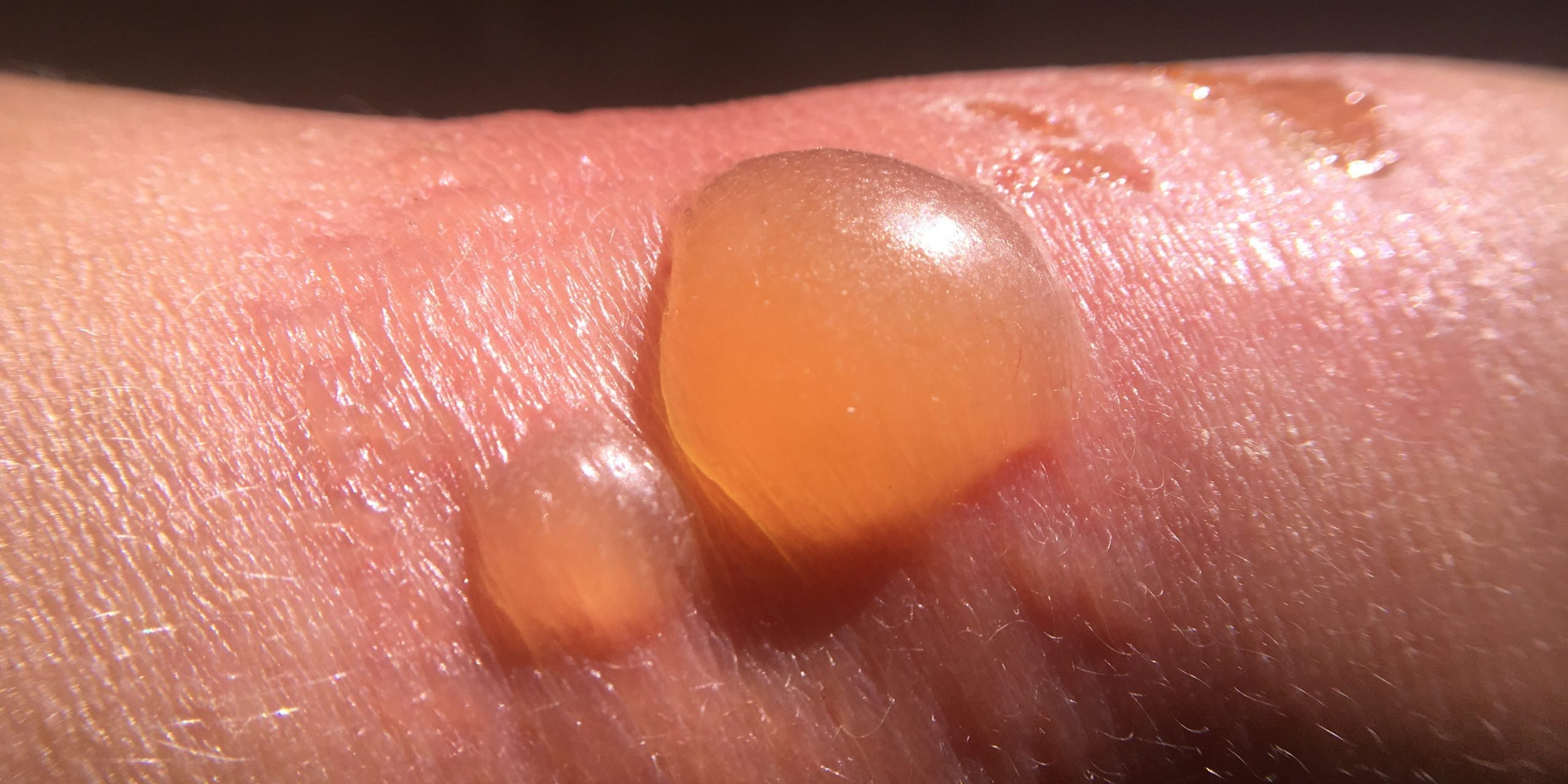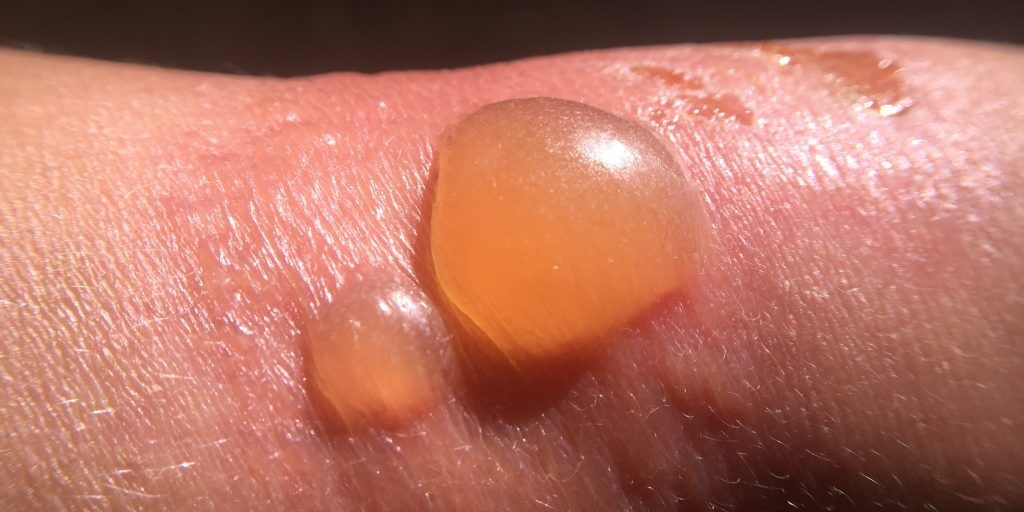
ElRoi/Shutterstock
- Sunburn blister treatment involves applying aloe vera, taking an NSAID, and using a cool compress.
- When you get a deep sunburn, your body produces fluids within your skin, which results in blisters.
- If you experience symptoms on top of the blisters, such as fever or chills, you should see a doctor.
- Visit Insider's Health Reference library for more advice.
Blisters aren't just caused by friction, like in the case of getting blisters on your feet from uncomfortable shoes. They can also arise as a result of burns, like from the sun's UV radiation
What are sunburn blisters?
If your sunburn is very severe, you might experience clusters of sunburn blisters that may cover large areas of your skin. Here's why sunburn blisters form in the first place and how to treat them.
Blistering is an indication that you have a second-degree sunburn, meaning that the sunburn doesn't just affect the outermost layer of skin (the epidermis), but also the layer beneath it, called the dermis.
Sunburn blisters are a result of rapid inflammation caused by UV damage to the skin, says Lavanya Krishnan MD, Board Certified Dermatologist at Arya Derm in San Francisco. In turn, the body produces fluids within the skin,, which results in blisters.
These blisters will usually appear 24 hours after the sunburn occurs, Krishnan says. They will usually be small, skin-colored, and filled with clear or white fluid. They can appear in clusters and cover a large surface area.
However, iIf the blisters themselves are larger, such as over a half-inch, these are more severe and should warrant medical attention.
Home remedies for treating sunburn blisters
If your case of sunburn blisters is mild, there are plenty of things you can do at home to feel better and get relief from the itchy, painful blisters.
1. Apply aloe vera
Aloe vera is usually the go-to for sunburns and related discomfort, and for good reason. Krishnan says aloe will help with soothing the general sunburn and healing the blisters. As previously mentioned, sunburn blisters are caused by inflammation. Aloe has anti-inflammatory properties, so it can help reduce the discomfort that comes along with inflammation.
The gel can also speed up the healing process, since it is rich with vitamins and can stimulate collagen production. However, if the blisters have already popped or are open, applying aloe to it will further irritate the skin and could possibly lead to infection. Stick to using aloe on intact blisters.
2. Take an NSAID
Nonsteroidal anti-inflammatory drugs (NSAIDs) are over the counter meds that can reduce inflammation in the body. The most common ones are aspirin and ibuprofen (Advil, for example).
"Inflammation is what contributes to the fluid accumulation, and thus to the blisters, pain, redness, swelling, and discomfort," says Krishnan. NSAIDs can help alleviate this from the inside out.
3. Use a cool compresses
If your skin feels like it's on fire, then cold, damp compresses can help bring you some cooling relief. Take a clean cloth or towel, dampen it with some cold water, and apply to the problem areas. Along the same lines, taking cool showers or baths can feel refreshing as well.
4. Apply ointment
This tip is especially pertinent if your blisters have popped. If they pop, Krishnan suggests taking the following steps:
- Gently rinse the skin with soap and water
- Apply an antibiotic ointment such as Bacitracin, Vaseline, or Aquaphor to the exposed skin
- Cover with loose bandaging or gauze to prevent infections
5. Stay hydrated
It is crucial to drink lots of water in order to stay hydrated while you recover from your sunburn and blisters. According to the Skin Cancer Foundation, sunburns cause fluids to head to the skin, taking it away from the rest of your body. Drink up to make sure you don't become dehydrated.
Insider's takeaway
If you are experiencing other symptoms on top of the blisters, such as fever, chills, dizziness, confusion, and shortness of breath, Krishnan urges you to seek medical attention. You could be experiencing sun poisoning.
Regardless of the size of the blisters, Krishnan says they can be very painful and itchy. Even though you will be uncomfortable and likely feel very tempted, do not pop the blisters because it can result in an infection.
It's best to take action to prevent sunburns and sunburn blisters before they occur, so always remember to use a broad-spectrum sunscreen of at least SPF 30, reapply every two hours, and seek shade so you don't have to deal with burns in the first place.
